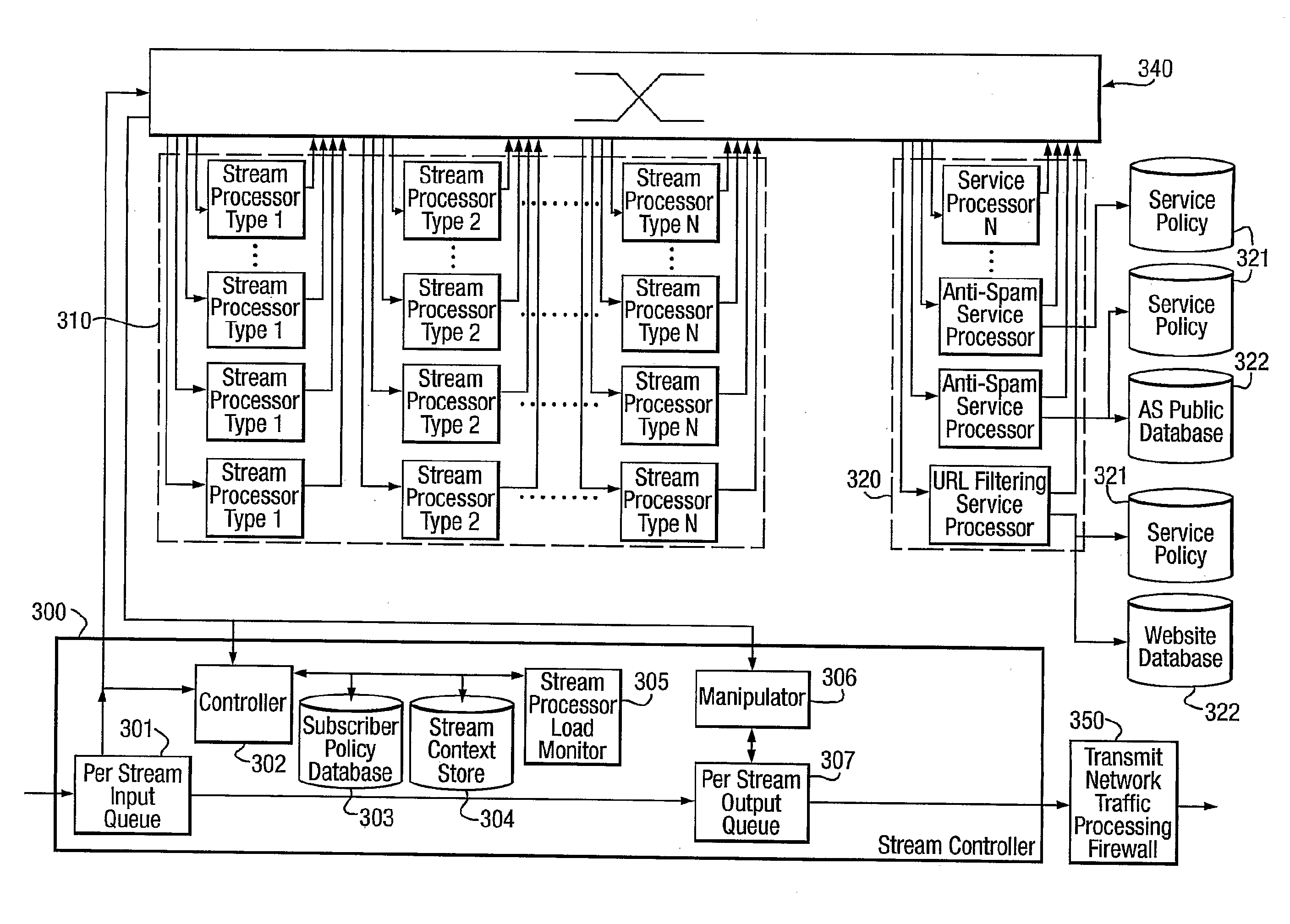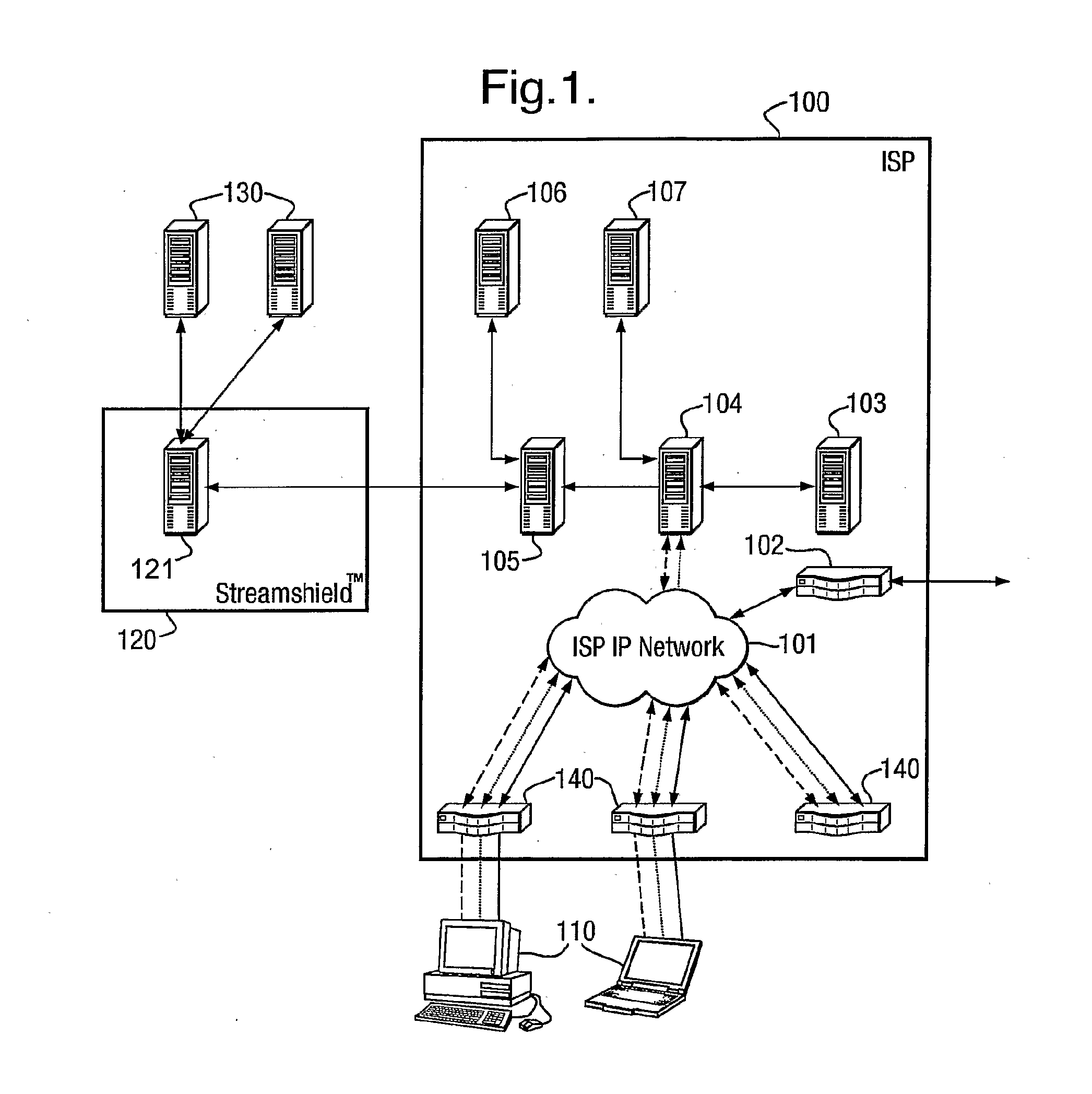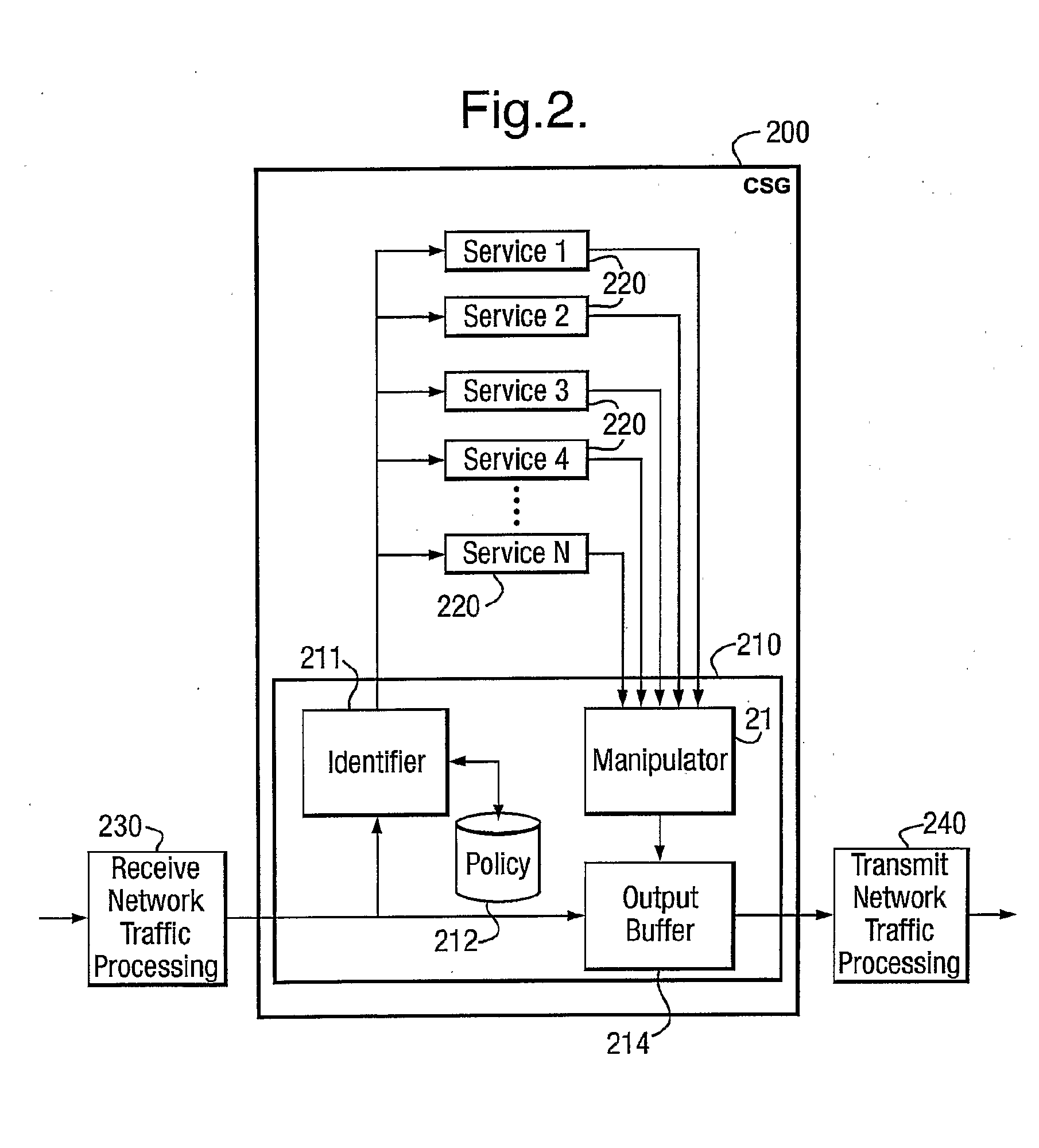Network-Based Security Platform
a security platform and network technology, applied in the field of networked content processing platforms, can solve the problems of easy to see disadvantages in the current handling of content security issues, the possibility of malicious activity, and the compromise of networked servers and workstations
- Summary
- Abstract
- Description
- Claims
- Application Information
AI Technical Summary
Benefits of technology
Problems solved by technology
Method used
Image
Examples
Embodiment Construction
[0047] In order to understand the present invention, aspects of the conventional approaches to content security are now discussed.
[0048] Software based solutions are typically written either for client PCs or for deployment on servers (e.g. e-mail, file, proxy). They function well in this environment offering a good solution, but as they utilise standard software, they are limited by the speed of the platform they are operating on. Although the speed of CPUs and platforms is increasing, these solutions are always limited by their compute capacity (particularly where complex algorithms or data manipulation are required) and when deployed in network traffic paths, by the non-optimised manner in which traffic is passed to or from the compute engines, such as interrupts to a non real-time Operating System. Despite these limitations, software solutions do offer a degree of flexibility and can easily be adapted, extended and updated using well known industry tools and techniques.
[0049] ...
PUM
 Login to View More
Login to View More Abstract
Description
Claims
Application Information
 Login to View More
Login to View More - R&D
- Intellectual Property
- Life Sciences
- Materials
- Tech Scout
- Unparalleled Data Quality
- Higher Quality Content
- 60% Fewer Hallucinations
Browse by: Latest US Patents, China's latest patents, Technical Efficacy Thesaurus, Application Domain, Technology Topic, Popular Technical Reports.
© 2025 PatSnap. All rights reserved.Legal|Privacy policy|Modern Slavery Act Transparency Statement|Sitemap|About US| Contact US: help@patsnap.com



